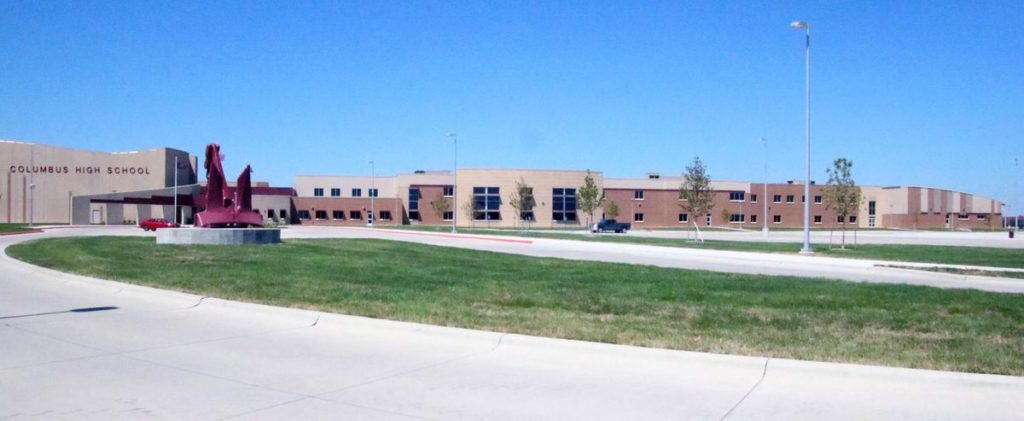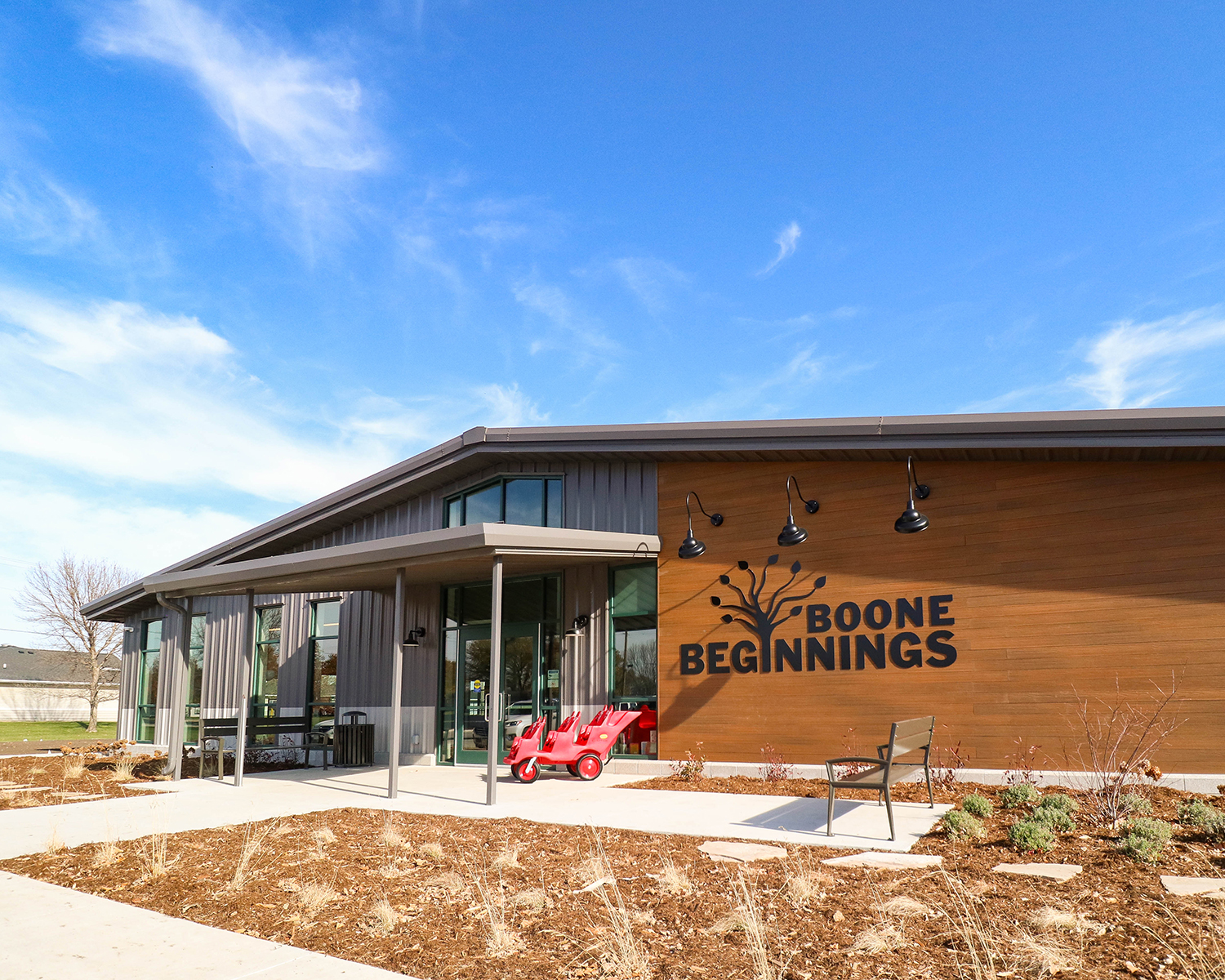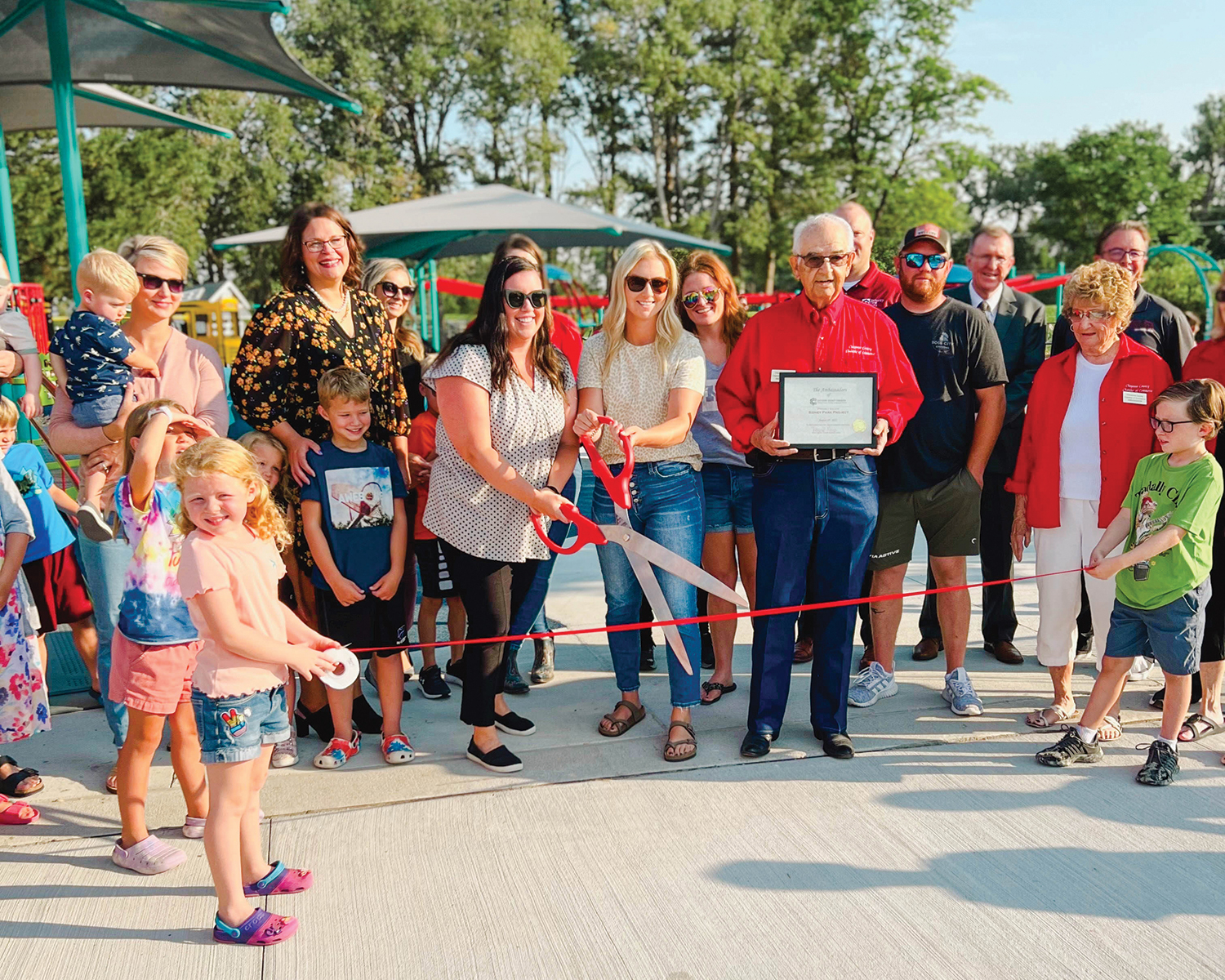
In November 2009, the Omaha World-Herald praised Columbus, Nebraska, for its “long-term vision on community planning and economic growth.” The opinion piece specifically pointed to the city’s “Drive for Five” initiative to build the local workforce. Even during the days of the great recession, Columbus business leaders were hoping to recruit or retain at least 500 skilled workers to grow the local economy.
The newspaper editors also recognized Columbus residents for coming together to develop ideas for Vision 2020, a planning process to identify community priorities, and a study to address long-term needs in quality of life facilities, funded by the Columbus Area Future Fund, an affiliated fund of Nebraska Community Foundation.
Fast forward six years to January 2015, when the Columbus Public School board voted to join a collaboration with Columbus Area Future Fund, City of Columbus, the public library foundation, the public health department, and the YMCA in raising funds for a host of community projects.
The school district’s effort would focus on creating a $1.1 million STEM Academy for its new $49.9 million high school. There was significant local buy-in for the STEM (science, technology, engineering, math) Academy from a business community hungry for homegrown talent. Business and manufacturing commitments blew past their fundraising goal, which triggered additional matching funds for the project from individual families and foundations. By early 2017, the project had attracted more than $1.6 million.
These are big numbers for a medium size city of about 22,000 people, but they represent only a portion of the $150 million in public and private projects in progress during the current decade, according to the Nebraska Manufacturing Advisory Council.
Columbus has a history of being a center of industry. It is one of the most highly industrialized cities per capita in the state. Its slogan, “City of Power and Progress,” is a nod to the birthplace of public power in Nebraska, and certainly, the area’s can-do spirit.
Community and business leaders who stepped up to create a STEM Academy to serve as a pipeline for high-paying jobs had learned important lessons over the course of the Drive for Five initiative. In the 21st century, quality of life is as important as career when choosing a place to live, work and raise a family.
“Certainly, people are making decisions about where to locate based on more than just jobs,” said K.C. Belitz, president of the Columbus Area Chamber of Commerce and a member of the Columbus Area Future Fund and Nebraska Community Foundation board.
“Educational opportunity is a key consideration for our target market – young families. Having a new high school and the STEM Academy is a game changer. The high quality of all our schools and our public amenities makes a strong statement that this is a community willing to invest in its people,” Belitz said.
That is why it made perfect sense for the community to collaborate, rather than compete, in raising millions of dollars for new, state-of-the-art facilities in education, health care, culture, and recreation.
Belitz said it has taken a group effort to move forward with the four “Quality of Life Centers,” as they are referred to, since talks began eight years ago.
“Any of those projects could have done its own capital campaign,” Belitz said. “Working together in a collaborative effort is what attracted such a high level of matching funds. The process accelerated when several local and statewide funding sources came together in a collaborative fashion. They knew that their gift could do more because of the cooperative nature of what was happening in Columbus. And the community had spoken about what their priorities were.
“We wouldn’t be where we’re at today if the people behind those projects hadn’t been willing to share information, ideas and even donors,” Belitz said. “I think that has been an extraordinary community achievement.”
The Columbus Area Future Fund is aptly named. Its four priorities – building local leadership, energizing entrepreneurs, engaging youth and young people, and expanding community philanthropy – are all about looking beyond the present for ways to invest in the future.
The new public high school in Columbus opened in March 2017. This past April, elementary and middle school students and their parents got a chance to peek into their future at the Nebraska Science Festival, held for the first time in Columbus at the new STEM Academy, presented by University of Nebraska Medical Center. UNMC’s outreach coordinator, Kacie Baum, said Columbus High School was chosen as one of the stops because of its capacity to offer lots of hands-on learning activities. And she wanted other educators to know about the new facility.
Heidi Elliott, the STEM Academy career coordinator, said the program offers certification and dual credits that apply to both high school and college. There are five career path options: advanced manufacturing (which includes mechatronics, robotics, and design technology), welding technology, construction technology and automotive technology.
There is also a basic welding class offered free of charge to eligible people ages 18 and older through a collaboration with Central Community College-Columbus. Completing 120 hours and gaining certification bridges the training gap and helps people move from minimum wage jobs to higher paying positions. Ten students recently completed the course.
Other specialized training will provide certification in equipment such as a digital multimeter, which is used in a variety of electricity and electronics measurements. The 41 students who completed the specialized training this past semester will have a head start as they enter the workforce or go on to college.
Elliott, a 2002 graduate of Columbus High School, is happy to be back in her hometown. After earning an engineering degree at Texas A&M and working in the industry for a time, she got her master’s degree in education, taught high school math, and then returned to Columbus with her Texas-born and raised husband.
“It’s like going full circle,” Elliott said. “I had a mentor in high school. She worked for Behlen and encouraged my love and interest in engineering. Now I am able to do something similar for kids today. The impact the Academy will have on local businesses will be both gradual and swift,” she said.
Belitz agreed, “The business community is not expecting immediate results. They know that this is a long-term commitment – maybe six to eight years – before those students are ready to join the workforce full time. But the important thing is we’re lifting up these careers as honorable and profitable, ones that can lead to a good life. People have bought into this and see the value in the vision.”
The academy in Columbus is different than most STEM programs because it is located in the same building as the high school.
Ron Haefner is the automotive technology teacher and “coach” who has taken his teams to state contests and national competitions dozens of times. His new workshop includes 50 percent more square footage, and six vehicle lifts compared to four at the old school. Haefner says the move has been both “exciting and a little scary.”
“This will be the flagship program in the state, and I think it will set the standard,” Haefner said.
Over the past decade, the people of Columbus have set the bar extremely high when it comes to standards in quality of life facilities. They have also set for the community a precedent for moving farther and faster by moving forward together.
“Beyond being a conduit for major funding initiatives, Columbus Area Future Fund is becoming a facilitator, and every community needs that,” said K.C. Belitz.
“A facilitator is needed to build bridges and trusting relationships throughout the community and into the future. What will we need 20 years from now? We don’t know. But to make that happen, our Fund will be there, because we are not committed to just one cause or addressing one need. We will have the flexibility to invest in things we can’t even envision today, and to be the community conduit that helps make whatever it is, possible.”



